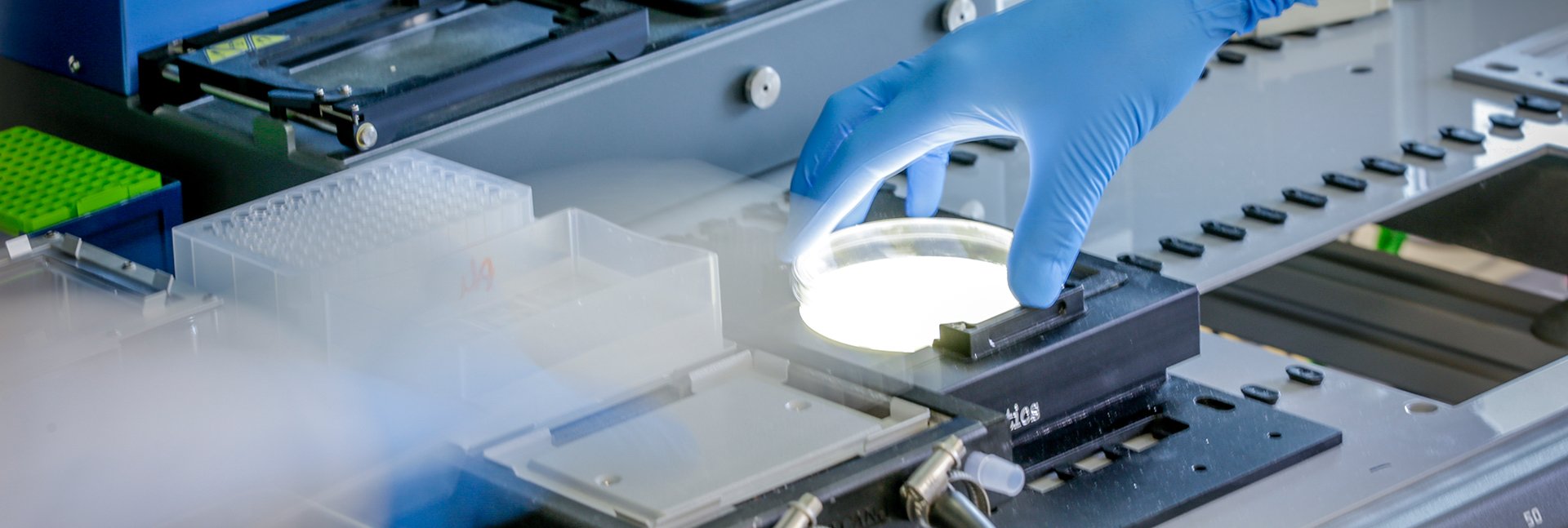Bacterial Transglutamination: a method of choice to produce ADCs
Enzymatic conjugation using bacterial transglutaminase (BTG) allows site-specific conjugation. The technique was developed in collaboration with Innate Pharma and is currently widely used at MImAbs to produce antibody-drug conjugates (ADCs). BTGs catalyze the formation of an isopeptide bond between the γ-carboxamide group of a glutamine and a primary amine group.
A conserved glutamine located at position 295 of the constant domain on the heavy chain is the sole γ-carbonylamide donor for BTG within the backbone of deglycosylated IgGs, allowing the generation of homogeneous ADCs that carry one payload per heavy chain (Jeger et al, Angew. Chem. Int. Ed. 2010). The resulting ADCs therefore present a very precise drug-to-antibody ratio (DAR) of 2.
Further developments of this method have widened the possibilities that it currently offers:
Optimal reaction conditions, better homogeneity. Thereaction conditions now include (1) an enzymatic reaction that couples spacers to the antibody using BTG and (2) a click-chemistry-based reaction that joins a linker and a cytotoxic payload to the spacer. In addition to the versatile nature of this chemo-enzymatic two-step process, it guarantees highly homogenous conjugation products and uses significantly smaller quantities of costly toxins than alternative methods (Dennler et al, Bioconjugate Chem 2014).
Greater drug-to-antibody ratio. Mutation of asparagine 297 into a glutamine on the heavy chain creates a new docking site for cytotoxic payloads. ADCs resulting from these mutant antibodies are a homogeneous population with a DAR of 4 (Jeger et al, Angew. Chem. Int. Ed. 2010). As shown in the example below, the DAR obtained with BTG conjugation is extremely precise (2 or 4).
Mass spectrometry profiles at different steps of the BTG conjugation process of a wild-type (left) or glutamine 297 mutant (right) antibody to generate ADCs with DAR=2 or DAR=4, respectively.
Important points:
This technology can only be used with deglycosylated antibodies, which can be generated by one of two ways: by chemical deglycosylation prior to the BTG reaction (using a glycosidase), or by genetic engineering to abolish the N-glycosylation site on the antibody.
Both methods (DAR=2 and DAR=4) have been performed on multiple antibodies at different scales (mg amounts, up to 100mg).
EFFICACY
This technology produces ADCs with an equivalent efficacy to ADCs generated using other methods:
Comparison of Brentuximab with an equivalent BTG-generated ADC. The anti-CD30 antibody coupled to MMAE by bacterial transglutamination shows very similar in vitro efficacy to Brentuximab (Adcetris®, same anti-CD30 chemically coupled to MMAE) in KARPAS 299 cells using the CellTiter Glo® Luminescent Cell Viability assay.
Beyond ADC's, BTG conjugation to modify antibodies in a myriad of different ways
Using MI-mAbs’ two-step chemo-enzymatic BTG conjugation, virtually any molecule with a Click-chemistry compatible group can be coupled to an IgG. The method has therefore been declined to generate other antibody derivatives, including:
Bispecific antibodies: IgG-Fab Bi-Abs and Fab x 2 bi-specific antibody formats are efficiently and commonly made within MI-mAbs biochemistry department, but other formats can also be easily generated (VHH, nanobodies, scFvs; see Bispecific Antibodies)
Labeled antibodies: all sorts of dyes or chemical entities can be conjugated to antibodies, for example Alexa Fluor® fluorescent dyes, peptides, oligonucleotides…
